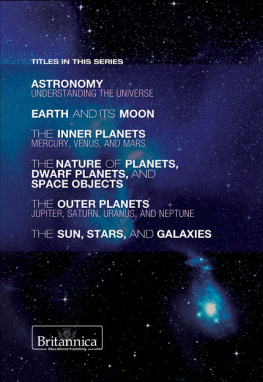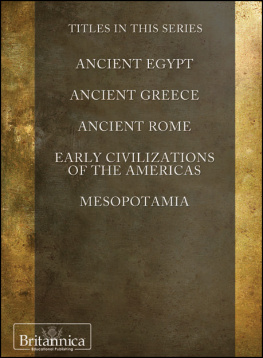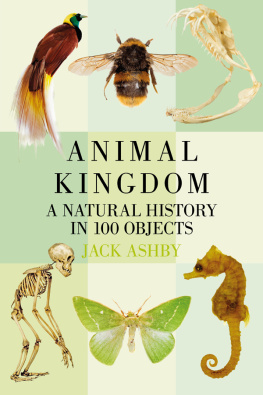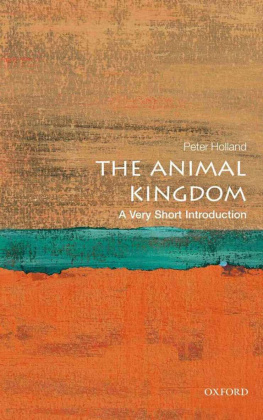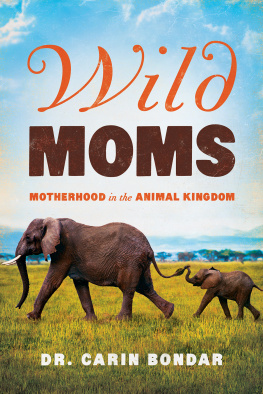A Closer Look at the
ANIMAL KINGDOM
INTRODUCTION TO BIOLOGY
A Closer Look at the
ANIMAL KINGDOM
Edited by Sherman Hollar

Published in 2012 by Britannica Educational Publishing
(a trademark of Encyclopdia Britannica, Inc.)
in association with Rosen Educational Services, LLC
29 East 21st Street, New York, NY 10010.
Copyright 2012 Encyclopdia Britannica, Inc. Britannica, Encyclopdia Britannica, and the Thistle logo are registered trademarks of Encyclopdia Britannica, Inc. All rights reserved.
Rosen Educational Services materials copyright 2012 Rosen Educational Services, LLC.
All rights reserved.
Distributed exclusively by Rosen Educational Services.
For a listing of additional Britannica Educational Publishing titles, call toll free (800) 237-9932.
First Edition
Britannica Educational Publishing
Michael I. Levy: Executive Editor, Encyclopdia Britannica
J.E. Luebering: Director, Core Reference Group, Encyclopdia Britannica
Adam Augustyn: Assistant Manager, Encyclopdia Britannica
Anthony L. Green: Editor, Comptons by Britannica
Michael Anderson: Senior Editor, Comptons by Britannica
Sherman Hollar: Associate Editor, Comptons by Britannica
Marilyn L. Barton: Senior Coordinator, Production Control
Steven Bosco: Director, Editorial Technologies
Lisa S. Braucher: Senior Producer and Data Editor
Yvette Charboneau: Senior Copy Editor
Kathy Nakamura: Manager, Media Acquisition
Rosen Educational Services
Alexandra Hanson-Harding: Editor
Nelson S: Art Director
Cindy Reiman: Photography Manager
Matthew Cauli: Designer, Cover Design
Introduction by Alexandra Hanson-Harding
Library of Congress Cataloging-in-Publication Data
A closer look at the animal kingdom / edited by Sherman Hollar.
p. cm.(Introduction to biology)
In association with Britannica Educational Publishing, Rosen Educational Services.
Includes bibliographical references and index.
ISBN 978-1-61530-580-3 (eBook)
1. AnimalsClassificationJuvenile literature. I. Hollar, Sherman.
QL351.C59 2012
590.12dc22
2011010406
On the cover: An elephant, the largest living land animal, is seen against the sweeping background at
Kilimanjaro, northern Tanzania, Africa. Shutterstock.com.
Interior background images Shutterstock.com.
CONTENTS




INTRODUCTION

A nimals are everywhere. Even busy New York City, full of cars and concrete, is teeming with animal life. Ants march up a sidewalk. Pigeons peck at crumbs, while squirrels search for nuts. A horse drawing a carriage trots by Boston terriers dragging their owner to the dog park. A gray rat skitters across subway tracks while a cat stares down from a skyscraper at tiny taxis and people below. No matter where you live, you will be surrounded by animalsincluding human beings! This book will help you learn more about your fellow members of the animal kingdom.
There are more than ten million kinds of animals in the world, and about 1.3 million have been identified by scientists. All life forms started in the same place: in the oceans some 3.5 billion years ago. Our common ancestors were simple single-celled organisms. Over time, many living things became more complex as they adapted to various environments. Multicellular organisms began to form and separate into different species as they moved. Some moved into freshwater, others to land.
Members of the kingdom Animalia are different from all other living things on Earth. We are eukaryotes, which means that our cells have various complex parts such as a nucleus and organelles. (Bacteria and archaea are made up of simpler prokaryotic cells.) But unlike plants, which are also eukaryotes, we cannot make our own food through the process of photosynthesisanimals must rely on eating vegetation and other animals to survive. Animals are metazoans (the prefix meta- means many) because they are made of many cells. (Single-celled animal-like creatures are called protozoa.)
Scientists who study animal life classify animals based on their bodies. That helps scientists decide how animals are related to others. One of the most important ways of classifying animals is by whether they are invertebrates (who lack a backbone) or vertebrates (who have one). Invertebrates make up 95 percent of animal species. The first animals were invertebrates, such as sponges and jellyfish. About 85 percent of invertebrates are arthropods (the word means jointed foot). Many arthropods have an exoskeleton made of a substance called chitin. Arthropods include centipedes, spiders, scorpions, and lobsters. Most significantly, they include insects. More than one million insect species have been identifiedthe largest group within the animal kingdom.

Cygnets (baby swans) walk in the rain at Abbotsbury Swannery in Weymouth, England. The swannery is home to a herd of 800 wild swans. Matt Cardy/Getty Images
Vertebrates are animals with backbones. Some live in the sea, such as fish; others live on land; others, like birds, take to the air. They make up only about 5 percent of all animal species. The complexity of their bodies lets vertebrates have bigger, more complex brains. The most advanced vertebrates are mammals. Only 5,000 species of mammals exist. The blue whale is a mammal that is the largest living creature on Earth. It can grow to be more than 100 feet (30 meters) long and weight 300,000 pounds (136,000 kilograms).
Scientists also study how animals adapt to their environments. While some animals are solitary, others are more social. Bees live in hives. Wolves live in packs. Some build homes. Groundhogs live in complex underground burrows with connecting tunnels. Other animals have adapted themselves to live with humans, such as our closest companions, dogs.
No doubt about it, animals large and smallincluding usadapt themselves to survive in many different ways. This volume will help you to understand and identify the animals that live around youwhether youre in a bustling city, a quiet suburb, or out in the countryand those that populate our planet.
CHAPTER 1
THE VARIETY OF ANIMAL LIFE

L iving things are divided into three main groups called domains. Single-celled organisms called bacteria and archaea each constitute their own domain. All other organisms make up a third domain, Eukarya, which includes not only single-celled algae and protozoa but also animals and other multicellular organisms. Animals form the largest group within the Eukarya. They range from very simple invertebrates, such as sponges, to highly complex mammals, such as whales, monkeys, and humans. Animals display some key differences that distinguish them from other living things. For example, what is the difference between an animal such as a horse and a plant such as grass? A horse moves around in the pasture eating grass. It trots toward you when you offer it a lump of sugar and reacts favorably when you stroke its head. The grass, however, is rooted to one place. It does not respond behaviorally to people or to the horse in any way. More importantly, plants use nutrients from the soil and chemical reactions from the sun to make their own food. This process is called photosynthesis. Animals cannot make their own foodto survive, they have to eat plants or other animals.
Next page

